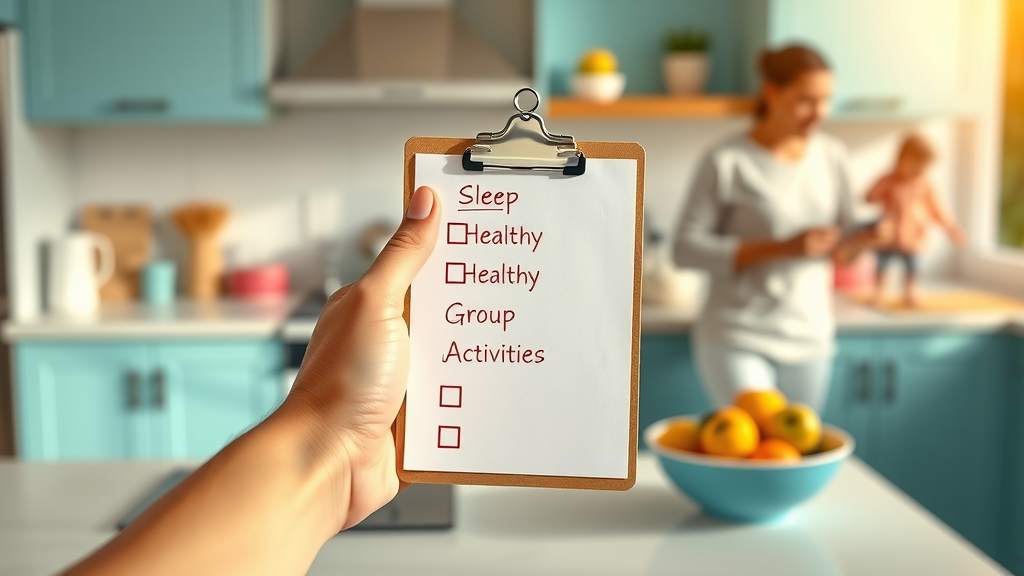Did you know that nearly 1 in 3 adolescents will experience an anxiety disorder? As rates of teen anxiety continue to surge, parents play a critical role in identifying and addressing mental health challenges. This comprehensive guide puts the most up-to-date teen anxiety resources for parents at your fingertips—empowering you to support your young person with clarity, confidence, and compassion.
Understanding Teen Anxiety: The Scope of the Issue
"Nearly 1 in 3 adolescents will experience an anxiety disorder. Early intervention is key."
- Key facts and statistics on teen anxiety: Anxiety disorders are among the most common mental health conditions in kids and teens, with studies showing that nearly 33% will face an anxiety disorder by age 18.
- The rising prevalence among kids and teens: In recent years, teenage mental health concerns have climbed, partially due to academic pressure, social media influences, world events, and family stressors. Social anxiety, panic attacks, and generalized anxiety disorders are being diagnosed at unprecedented rates.
- Relevant studies and mental health organization findings: Respected organizations like the National Institute of Mental Health and the American Academy of Pediatrics highlight that early intervention and access to mental health resources significantly reduce long-term complications for young adults.

What You'll Learn About Teen Anxiety Resources for Parents
- How to recognize symptoms of anxiety in your child or teen
- Practical mental health resources designed specifically for parents
- Effective strategies for supporting your young person at home
- Clear steps to access professional help for young people
- Tools for addressing anxiety disorders, including panic attacks and social anxiety
Recognizing Symptoms of Anxiety and Anxiety Disorders in Kids and Teens
- Common symptoms of anxiety in children and teens: Persistent worries, irritability, headaches, stomachaches, trouble sleeping, and sudden changes in academic performance.
- Differences between anxiety disorders: Social anxiety often leads to withdrawal and fear of social situations. Generalized anxiety is marked by excessive worry about everyday life. Issues like selective mutism and separation anxiety have unique presentations that can be mistaken for shyness or clinginess.
- Signs of selective mutism and separation anxiety: Selective mutism manifests as persistent refusal to speak in certain settings, while separation anxiety can bring intense fear when separated from caregivers—often resulting in school avoidance.
- How anxiety can show in academic and social settings: Anxiety in children may appear as avoidance of school, reluctance to join group activities, or outbursts when facing new situations, signaling the need for further support.

Key Mental Health Resources for Parents Supporting Young People
- Top mental health resource websites and hotlines: The National Alliance on Mental Illness (NAMI), SAMHSA’s Helpline, and the Crisis Text Line offer invaluable assistance for parents of kids and teens.
- Health resource directories for kids and teens: Online directories like Child Mind Institute and KidsHealth provide details on anxiety disorders and local support options, ensuring families can find a tailored health resource for their needs.
- Free mental health organizations and their offerings: Nonprofits frequently offer free mental health screenings, parent support groups, and guidance on accessing effective coping strategies for children and young adults.
- How to select the right health resource for your young person: Match resources to your child’s age, diagnosis, and unique needs—whether that’s cognitive behavior therapy information, school counseling, or community-based support groups.
Practical Strategies: Supporting Your Young Person at Home
- Creating an open environment: Encourage honest discussions about feelings of stress or anxiousness—normalizing mental health conversations helps kids and teens feel less isolated.
- Tools and exercises for managing anxiety: Try deep breathing exercises, journaling, and mindfulness techniques to build emotional resilience.
- Developing coping skills and routines: Structured daily routines, healthy sleep habits, and regular physical activity act as proven buffers against anxiety in children and teens.
- Encouraging resilience in young adults and adolescents: Model positive coping strategies, celebrate progress (no matter how small), and empower your young person to face challenges confidently.

When to Seek Professional Help for Teen Anxiety
- Recognizing when anxiety requires clinical support: If symptoms severely disrupt daily activities—such as refusing school, withdrawal from friends, or persistent panic attacks—it’s time to turn to professional mental health resources.
- Making appointments with mental health professionals: Start with your child’s doctor or a school counselor for guidance. They can refer you to qualified therapists specializing in anxiety disorders in young people and young adults.
- What to expect from professional intervention: Therapists may recommend cognitive behavior therapy, behavioral therapy, or medication when necessary. Sessions focus on building coping strategies and addressing underlying fears.
- Navigating health insurance and youth-focused services: Contact your insurance provider to understand mental health coverage. Many communities also offer sliding-scale or free mental health support for kids and teens.
Mental Health Resources and Tools for Teens and Young Adults
- Self-help resources curated by mental health experts: Many apps, like Calm and Headspace, offer guided practices for anxiety management. Books on mental health, such as "Anxiety Relief for Teens," can also provide valuable guidance for your young person.
- Apps, books, and online communities: Digital tools allow young people and young adults to connect with trusted support networks, including moderated forums and confidential helplines.
- Peer support groups for young adults: Group programs led by professionals or peers help normalize experiences and build strong, positive connections.
- Parent involvement in mental health resource management: Stay engaged by discussing resources openly and collaboratively with your teen, regularly checking in on progress and comfort.

| Resource Type | Features | When to Use | Best For |
|---|---|---|---|
| Crisis Lines | 24/7 support, free mental health advice, immediate crisis help | Acute distress, panic attack, urgent safety concerns | Teens, young adults, parents seeking advice |
| Mental Health Apps | Guided relaxation, mood tracking, coping strategies | Daily management, learning new coping skills | Young people comfortable with technology |
| Therapy | Professional diagnosis, individualized care, evidence-based therapies | Persistent anxiety disorders, need for ongoing support | Kids and teens struggling with symptoms |
| School Programs | On-site counselors, group workshops, parent education | Building coping strategies, early detection | Children and teens, family outreach |
Managing Panic Attacks and Social Anxiety: Targeted Resources for Parents
- Understanding panic attacks in young people: Panic attacks are intense episodes of fear, often with physical symptoms like racing heart, shallow breathing, or dizziness. They can be very frightening but are manageable with practice and support.
- Step-by-step management during a panic attack: Remain calm, guide your teen through slow, deep breathing, and offer reassurance that the attack will pass. Teaching grounding techniques, like naming objects in the room or holding a comforting object, can help.
- Resources for social anxiety and selective mutism: Social anxiety may prevent young people from engaging in groups, while selective mutism results in silent episodes despite the ability to speak. Access resources from the Selective Mutism Association or social skills support groups for targeted strategies.
- Evidence-based interventions for anxiety in children and teens: Cognitive behavior therapy, exposure therapy, and social skills training are effective for reducing symptoms and building resilience in kids and teens experiencing anxiety disorders.

Special Considerations for Different Anxiety Disorders
- Generalized anxiety and separation anxiety: For generalized anxiety, focus on identifying triggers and teaching balanced problem-solving. Addressing separation anxiety in young people involves gradual exposure, positive reinforcement, and collaboration with educators.
- Supporting youth with selective mutism: Create pressure-free opportunities for communication and praise nonverbal engagement. Collaborate with therapists experienced in selective mutism for structured interventions.
- Addressing co-occurring mental health conditions: Some young adults may experience anxiety alongside ADHD, depression, or obsessive-compulsive disorder. A team approach with school counselors, therapists, and doctors ensures holistic care.
Connecting with Community and Peer Groups
- Local and online support for parents: Joining a parent-focused support group—virtual or in-person—lets you share experiences, ideas, and coping tips with others facing similar challenges.
- Parent-led advocacy groups: Many national organizations facilitate workshops and forums, giving parents a powerful voice in shaping programs and policy for kids and teens’ mental health.
- Benefits of peer-to-peer networking for young adults and teens: Support groups led by peers can help young people feel seen and understood, fighting isolation and building confidence to use available mental health resources.

Empowering Teens: Encouraging Autonomy in Mental Health
- Ways to involve your young person in health care decisions: Give teens a say in choosing health resources, apps, or support groups—this boosts investment and motivation in their own well-being.
- Building self-advocacy skills: Encourage teens to speak up for their needs, ask questions at appointments, and set mental health goals, supporting them in becoming informed young adults.
- Encouraging teens to access resources independently: Suggest they explore youth-friendly apps, workshops, or community activities, and celebrate their initiative so independence and confidence grow over time.

People Also Ask: Essential Questions on Teen Anxiety Resources for Parents
What are the first signs of anxiety in teens?
- Early signs of anxiety in teens include excessive worrying, avoiding social situations, irritability, physical symptoms like headaches or stomachaches, and changes in sleep or eating habits. While some stress is a normal part of adolescence, persistent symptoms that interfere with daily life may indicate an anxiety disorder and require attention.
How can parents help teens with anxiety at home?
- Parents can support teens by fostering open communication, practicing calm and active listening, and maintaining consistent routines at home. Investing in daily coping strategies, such as mindfulness, guided relaxation, and family activities, helps young people feel safe and supported. Encouraging a balanced lifestyle—including healthy sleep and nutrition—also plays a key role.
When should a parent seek professional help for their child?
- Parents should seek help when anxiety symptoms become severe or persistent, interfere with school, friendships, or family life, or when a teen experiences panic attacks or talks about self-harm. The first step is to consult your pediatrician or school counselor, who can recommend therapists or specialized youth mental health services.
What mental health resources are available for teens?
- Teens have access to national hotlines, local clinics, mental health apps, peer support groups, and educational online communities. Organizations like NAMI, Child Mind Institute, and free helplines offer tailored assistance for kids and teens. Choosing resources suited to your young person's age, diagnosis, and preferences helps ensure positive outcomes.
Expert Quotes: Insights from Mental Health Professionals
"Parents play a pivotal role in early recognition and intervention for anxiety." – Dr. Jane Carter, Child Psychologist
"The right mental health resource can make all the difference for children and teens." – Dr. Samir Patel, Family Therapist
Top 10 Actionable Tips: Teen Anxiety Resources for Parents
- Start with open, empathetic conversations
- Learn key symptoms of anxiety disorders
- Seek out reliable mental health resources for your young person
- Encourage healthy sleep, nutrition, and exercise routines
- Connect with community support for kids and teens
- Establish consistent home routines
- Sign up for parent education workshops
- Practice and model coping techniques
- Monitor for signs of escalating distress
- Advocate for your child with schools and health providers

FAQs About Teen Anxiety Resources for Parents
- Can anxiety in children and teens go away on its own? While mild anxiety may resolve as a normal part of growing up, ongoing or severe symptoms usually require intervention. Early access to mental health resources helps prevent escalation.
- Are there free mental health resources for teens? Yes, organizations like local youth centers and online hotlines offer free mental health support, including screening, counseling, and emergency help for young people.
- What are common misconceptions about anxiety disorders in young people? Myths include the belief that anxiety is just a phase, or that it results from weakness or poor parenting. In reality, anxiety disorders are medical conditions influenced by genetics, environment, and life events.
- How can parents address anxiety without increasing stigma? Use supportive, non-judgmental language, seek guidance from mental health professionals, and participate in community discussions to normalize help-seeking for kids and teens.
Key Takeaways: Helping Young People Access Teen Anxiety Resources for Parents
- Early intervention with the right mental health resource is vital for your young person’s success
- Parents are essential advocates and partners in the mental health journey of kids and teens
- Diverse, accessible resources exist – from hotlines to school programs to peer support networks
- Education, support, and open communication truly make a difference for children and teens facing anxiety

Conclusion: Moving Forward with Compassion and Confidence
- The importance of having teen anxiety resources for parents cannot be overstated. Keep learning, stay connected, and continue providing your young person with the support they deserve as they navigate their mental health journey.
 Add Row
Add Row  Add
Add 





Write A Comment